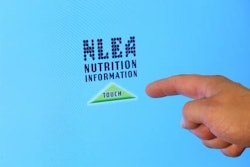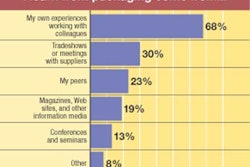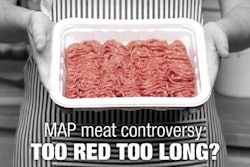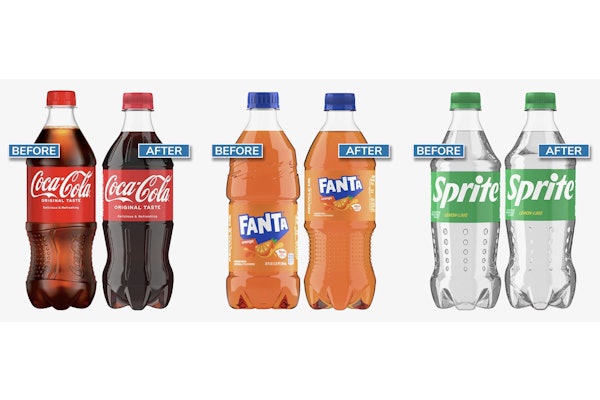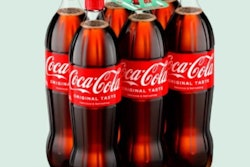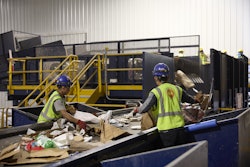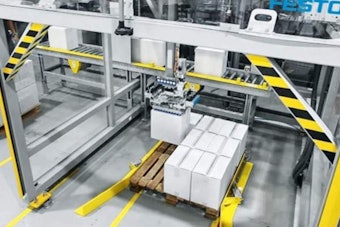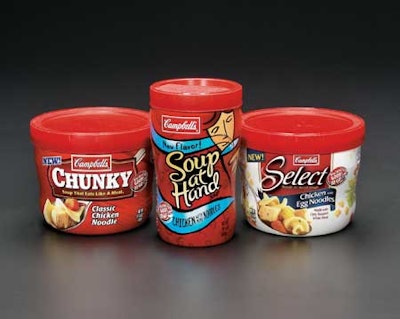
The consensus in packaging circles is that many packages would be more effective if the teams creating them collaborated early enough and often enough. Packaging managers from four leading consumer goods companies sounded a call to action—if collaboration is to improve, then marketing and design need to interact more seamlessly.
The four managers, engaging in a panel discussion at the “Fuse: Brand Identity & Package Design” conference in April in New York, said marketers and designers often work too independently of each other, resulting in a creativity gap that can derail effective package development before the process reaches the packaging line.
These challenges come at a time when packaging’s stature in the branding mix is becoming more important than ever as the reach of traditional advertising messages continues to dwindle for consumer products companies.
So said Moira Cullen, design director at Coca-Cola North America; Diane Fritts, visual properties and packaging manager at Nestlé USA; Darralyn Rieth, director of global design at Campbell Soup Co.; and Amy Diesner-Yules, packaging graphics design services manager at The Dannon Co.,
The four panelists also agreed that:
• Marketers should recognize that design is energizing all aspects of American culture today and leverage this trend meaningfully through packaging that motivates product purchase. They should also take an active role in selling the importance of investing in design to senior management.
• On the other hand, designers need to do better at understanding the overall business objectives that guide marketers’ work and be able to articulate design concepts that reflect the strategy.
Cullen summed up the panelists’ thoughts this way: “In strategy and design, we’re both dealing with abstracts and not knowing the future. Marketing has led the brand. But now, in the new world of the 360-touchpoint brand experiences, we’re realizing that design permeates everything.”
Steps to improved teamwork
The panelists said that marketing and design can work better together by taking the following three steps:
1. Write a design brief that’s functional for all stakeholders. Marketers and designers agree that the goals of any package are to first get retailer acceptance of it and then create a design that compels consumers to buy the product. What they don’t agree on is how to get there. The design brief aims to create a written road map for marrying strategy and design, but many designers believe that what’s often given to them to work from is unclear in providing designers direction.
Rieth has helped to shape a design-brief process over many years working at Campbell. She’s overseen a number of recent package designs, such as Campbell’s Select, that have elevated Campbell’s reputation as a company capable of leveraging convenience packaging to extend usage occasions, and increase sales, in soup. Rieth explained that it’s essential to develop a shared goal for a package’s role in the marketing mix but also to build a creative brief worded concretely enough to eliminate subjectivity.
“If you can talk to your consumer in 21⁄2 to 3 seconds, that is your goal. But designers need to communicate that to marketing to focus on those one or two things that are most important about the product and give up some other lesser things in the visual hierarchy. Help them to understand the goal of design in the strategy,” Rieth said.
“My team is responsible for going to the marketer and going through everything in detail, so we’re not designing against an objective with consumers. Start with the thought, ‘What is the business objective?’”
At Campbell, Rieth says, a step-by-step process is in place for writing an effective creative brief. This process has led to the development of packaging for Soup At Hand and microwaveable bowl meals.
The briefing document is critical as well at Dannon, which works on tight product-development timetables and challenges such as food-expiration dates.
“If you don’t get creative agreement up front, the launch is never going to happen on time,” Diesner-Yules said.
At Dannon, Diesner-Yules said design brief creation starts with an exploratory process that gives the marketing department what it needs. Then it intentionally goes way beyond that. “Go way too far,” she advised. “Even if you’ve go to take a couple steps back, your idea is still way out there. Then you test that on consumers.”
Nestlé and Dannon share a fundamental principle: Creative work doesn’t begin without a design brief. Nestlé’s marketing department also guards against “me too” packaging by requiring that design ideas be ownable for the company, Fritts said.
2. Avoid working in “silos.” The creative process can easily get sidetracked when different members of the package-development team work independently of each other—an approach known in branding circles as the “silo effect”—or aren’t brought into the process at all.
Coca-Cola’s Cullen, who also has served as president of the American Institute of Graphic Arts (AIGA) Center for Brand Experience, recommended that the entire development team review the brief together. This approach yields better results than the more common practice of each “layer” of the package-creation team taking its own detached look at the brief, she added.
“No one should start their work until everything is clear to everyone,” Cullen said.
Nestlé follows a process similar to the one Cullen explained. Fritts noted that in Nestlé’s approach, the packaging manager can require rewrite of an incomplete brief or even reject it.
“At the kick-off meeting, if marketing could attach visuals to help attach meanings for words, that would be really helpful for designers on the visual end,” Fritts said.
Campbell uses a “scorecard” process to focus both internal and external team members on essential strategy, Rieth said. The scorecard links all ideas back to the core business objective.
3. Talk in the other person’s language. Package creation, in its earliest stages, is about more than simply formulating ideas. It’s also about persuading other points of view. In order to be effective persuaders, the panelists said, an essential skill to bring to the table is the ability to talk in the language of other stakeholders.
After creating a package concept, a designer should be prepared to explain how the design fits the brand objective, to “set the validity of the brand in a newer space” on the store shelf, Cullen said.
’Unite ideas ... or waste time’
Diesner-Yules noted that in her 13 years at Colgate-Palmolive and now at Dannon, the most feasible ideas for new packages seem to emerge when the best ideas are brought together rather than developed in isolation from the rest of the package development team.
“Unite your ideas,” she said. “If you don’t do that, you’re going to be reworking your creative brief two or three times. You’re wasting valuable time.”
Fritts adds that the collaborative process benefits greatly by anticipating other stakeholders’ questions about project direction. “Designers, for example, know marketing is going to ask about designs relative to what the competition has in the stores. Designers should anticipate that and do comparative product analysis in the store.”
CREATIVE-TEAM MEMBERS FARE BEST BY ACKNOWLEDGING UPFRONT “THERE IS NO ONE RIGHT STRATEGY, NO ONE RIGHT HYPOTHESIS” TO DEVELOPING A GOOD PACKAGE, CULLEN SAID. “THE BRAND OWNER IS TAKING A RISK ON THE FUTURE. IF THINGS START WITH A COLLABORATIVE DISCUSSION, THE RIGHT DESIGN IS GOING TO EMERGE.”



